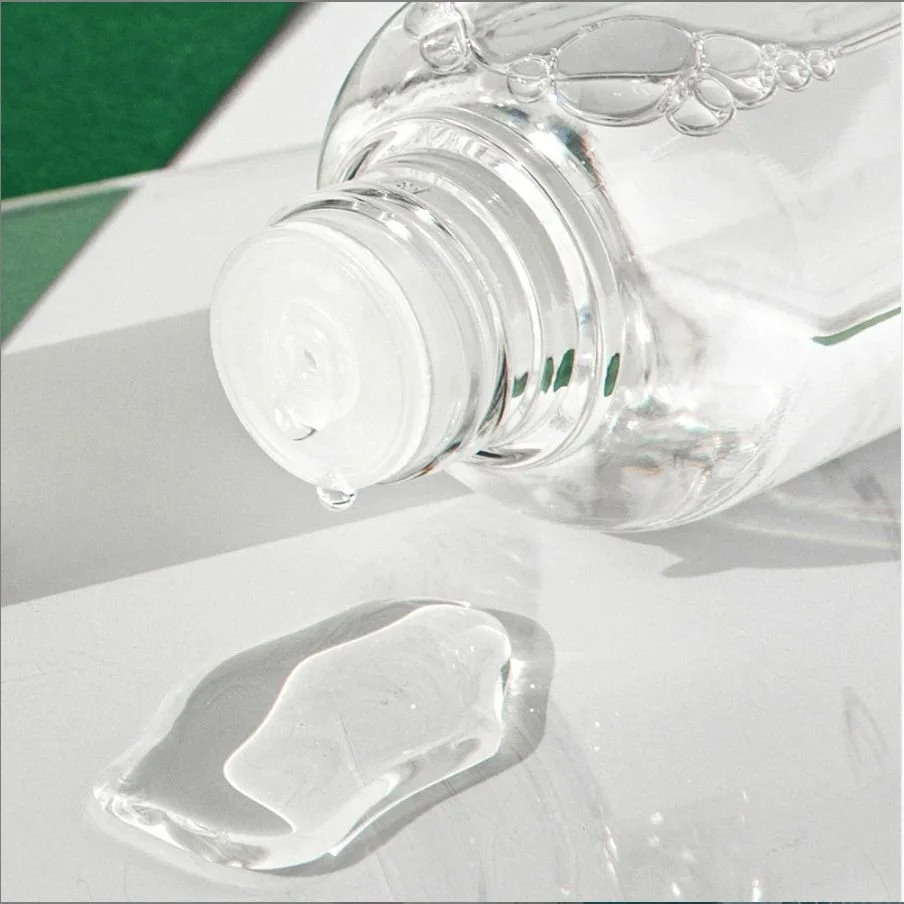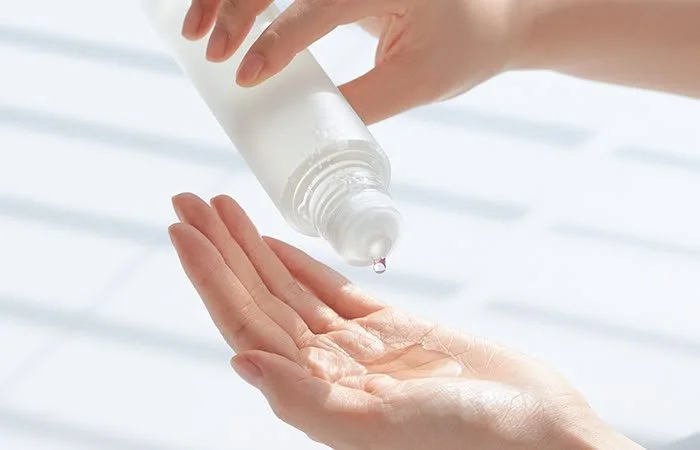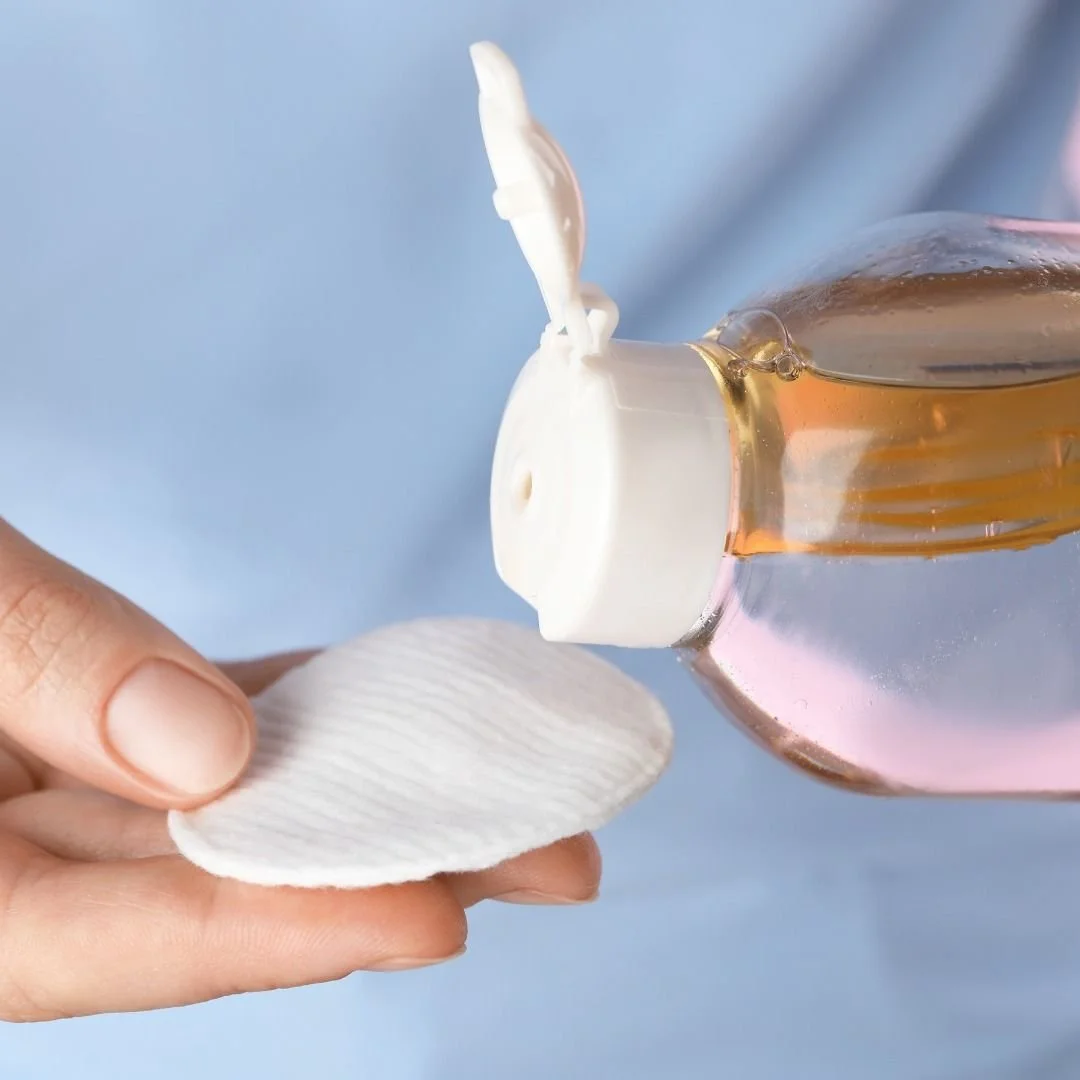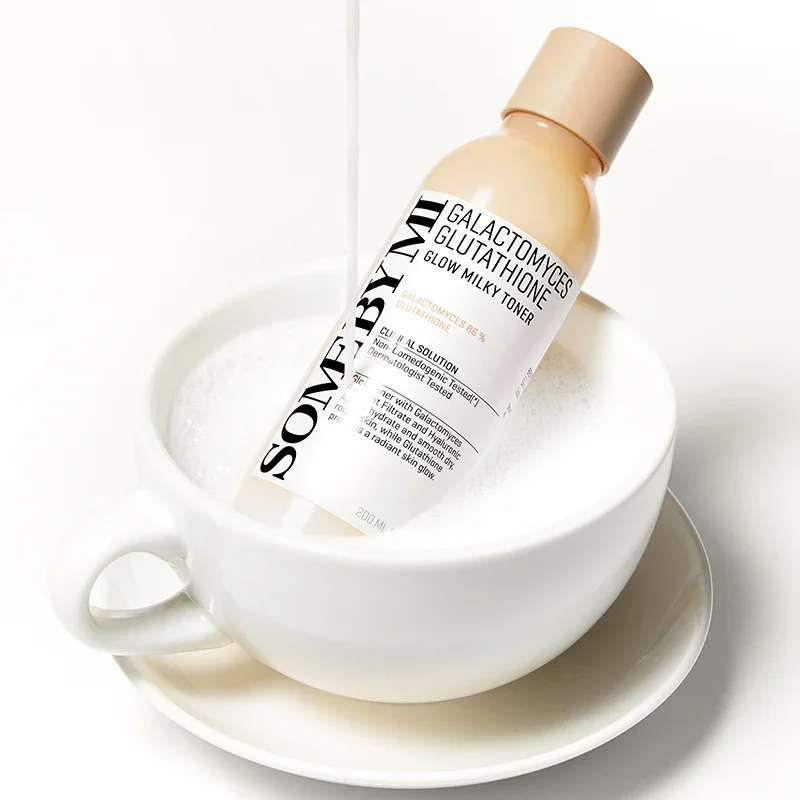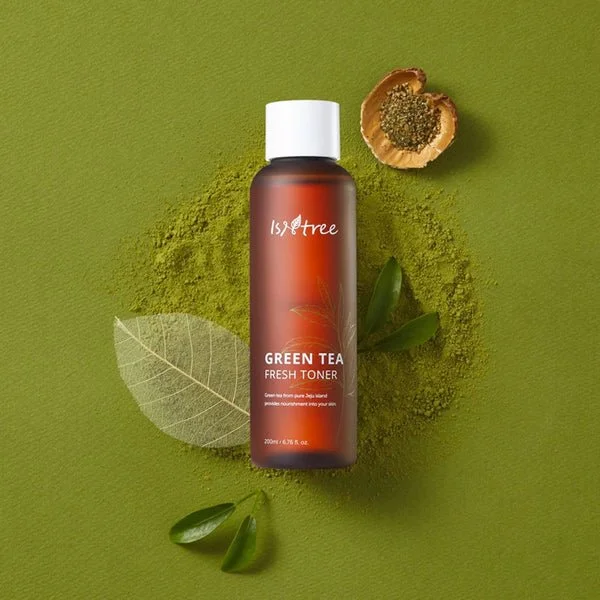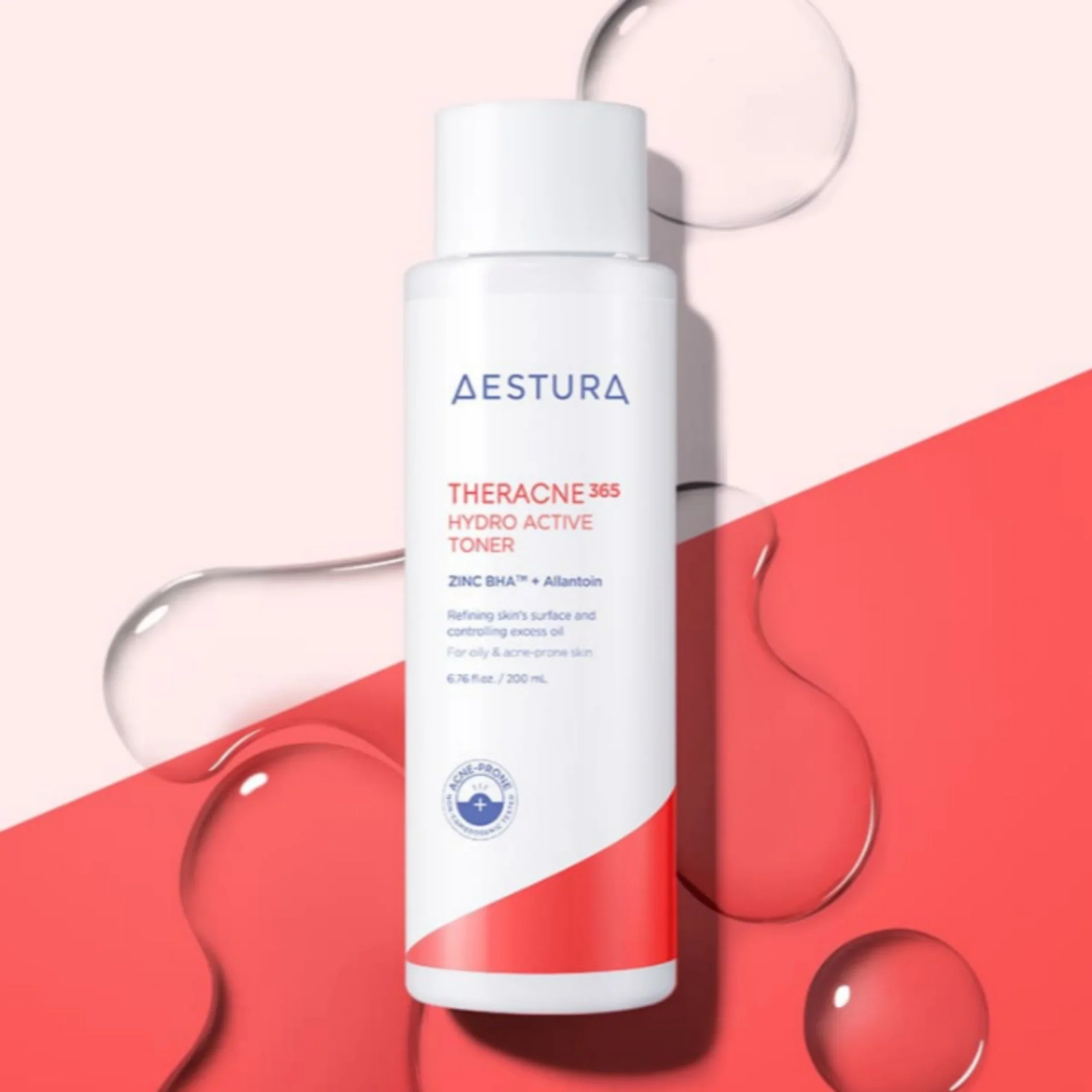Facial Toner: Do You Really Need It in Your Skincare Routine?
Toner is one of those skincare steps that sparks endless debate. Some swear it’s essential for healthy, glowing skin, while others have ditched it completely. So, who’s right? The truth is, toners have changed a lot since their “pH-balancing” days, and modern formulas—especially Korean toners—can do far more than you might think. From hydrating and calming your skin to delivering powerful antioxidants, they’ve become a flexible, targeted step in your routine. In this article, I’ll uncover what toner really is, whether you need it, how it compares to face mists, and how to choose the one that works best for your skin.
Table of Contents:
What Is a Toner?
Toners Then vs Now: From pH Balance to Skincare Boosters
Korean Toners and Their Unique Benefits
Toner vs Mist: Key Differences
Do You Really Need Toner?
How and When to Use Toner
Choosing the Right Toner for Your Skin Type
What Is a Toner?
A toner is a lightweight, water-based product you use right after cleansing and before your serums or moisturizers. Its main role is to prep the skin, leaving it refreshed and ready to absorb the next steps in your routine. Depending on the formula, a toner can hydrate, soothe, or provide gentle exfoliation, helping your skin feel smooth and balanced. In short, toners aren’t just an optional extra — they can be a simple but powerful step that supports your entire skincare routine.
Toners Then vs Now: From pH Balance to Skincare Boosters
Traditionally, toners were all about restoring the skin’s pH after cleansing. Back when bar soaps and alkaline cleansers were common, the skin’s natural acidity (slightly below pH 5) could be disrupted, leading to dryness, irritation, or breakouts. Toners helped bring the skin back to balance and replenished moisture lost from harsher cleansers.
Today, gentle, pH-balanced cleansers have changed the game. Most modern formulas don’t disturb the skin’s acidity, so the old “pH-fixing” purpose of toners is no longer essential. Instead, toners have evolved into multitasking boosters. Modern toners can hydrate, deliver antioxidants, soothe irritation, or even gently exfoliate, giving your skin a targeted boost before the next step in your routine.
Korean Toners and Their Unique Benefits
Korean toners have taken skincare to the next level. Unlike older formulas, these toners do more than just refresh or restore pH—they actively nourish, hydrate, and treat the skin from the first step after cleansing.
Many Korean toners combine lightweight hydration with targeted active ingredients, making them ideal for addressing concerns like dryness, irritation, dullness, or occasional breakouts. They often feature soothing extracts like Centella Asiatica, brightening ingredients like Niacinamide, or gentle exfoliants to refine texture.
A well-chosen Korean toner doesn’t just prep your skin — it enhances absorption of the next products, restores balance, and leaves your complexion feeling soft, refreshed, and healthier-looking. Whether your skin needs hydration, calming, or a boost of antioxidants, a Korean toner can be a versatile addition to your routine.
Toner vs Mist: Key Differences
In many ways, toners and mists are very similar—they’re both lightweight, water-based products designed to hydrate and refresh your skin. The main difference is in the delivery and convenience. Mists usually come in a spray bottle, making them perfect for on-the-go use, a quick refresh during the day, or to set makeup. Toners, on the other hand, are typically applied with a cotton pad or your hands as part of your daily skincare routine, giving a bit more control over targeted application.
Here are some practical aspects to consider:
Hydration boost: Both toners and mists can provide a quick hit of moisture, but mists are especially handy for midday hydration or after sun exposure.
Soothing & calming: Ingredients like aloe, chamomile, or green tea can be found in both, but the fine mist can give an instant cooling sensation.
Layering actives: Toners can often carry active ingredients like antioxidants, exfoliating acids, or brightening agents that prepare your skin for serums and moisturizers. Mists may include some actives, but they’re usually lighter and less concentrated.
Routine flexibility: Toners fit best into a structured skincare routine, while mists are versatile for anytime use—before makeup, after workouts, or whenever your skin needs a quick refresh.
In short, mists are like a convenient, portable version of toners. Whether you use one, the other, or both depends on your skin’s needs, lifestyle, and personal preference.
Do You Really Need Toner?
Toner isn’t a “must-have” in a skincare routine — the core essentials today are usually cleanser, moisturizer, and sunscreen. So technically, you can skip it if you want.
That said, a well-chosen toner can be a game-changer. A quality toner hydrates, soothes, and can even deliver targeted ingredients suited to your skin type or concerns. Over time, it helps your skin look smoother, more even, and calmer, while supporting natural regeneration and strengthening the skin barrier.
On the flip side, a bad toner can do more harm than good. Avoid products with alcohol, menthol, citrus, or other irritating ingredients, as they can disrupt your skin’s natural function and even reduce collagen production — definitely not what you want if your goal is healthy, youthful-looking skin.
In short, the right toner is a supportive step that enhances your routine, but only if it’s gentle and well-formulated for your skin.
How and When to Use Toner
Toners can be used morning, evening, or both — whenever it fits your routine best. The key is applying them right after cleansing and before serums or creams.
There are a few ways to apply toner:
With your hands: This is often the best method. Pour a small amount into your palms and gently press it onto your face. It feels soothing, and your skin can absorb the product more naturally.
With a cotton pad: Some toners are applied this way, especially if you want a bit of gentle exfoliation or need to sweep away any leftover impurities.
Pre-soaked toner pads: Popular in Korean skincare, these are convenient and mess-free, often infused with hydrating or active ingredients ready to use.
For extra hydration, K-Beauty enthusiasts often use the 7-Skin method. This involves layering toner up to seven times, letting each layer fully absorb before applying the next. The result is deeply moisturized, plump skin that’s ready to soak up the rest of your routine.
If you use toner around exfoliation steps, timing matters: apply it either before a liquid exfoliant like an AHA, BHA, or PHA (and let it fully absorb first), or after your exfoliant has soaked in before continuing your routine.
The best approach is the one that feels comfortable and enjoyable for your skin — toners are flexible, supportive, and help prep your skin to get the most from the rest of your routine.
Choosing the Right Toner for Your Skin Type
Choosing the right toner is more than just picking the first bottle you see. The texture, hydration level, and active ingredients should match your skin type and concerns. Toners can range from light, watery formulas to thicker, milky textures, and selecting the right one can make a big difference in how your skin feels and how well it absorbs the rest of your skincare.
Dry or sensitive skin:
Opt for milky or slightly thicker toners that provide extra hydration and soothing.
Look for humectants like Hyaluronic Acid and Glycerin, and calming botanicals such as Centella Asiatica or Chamomile.
Helps reduce redness, restore the skin barrier, and leave the skin soft and smooth.
SOME BY MI Galactomyces Glutathione Glow Milky Toner is fragrance-free and perfect for dry or sensitive skin, with 86% Galactomyces Ferment to improve texture, Glutathione and Vitamin C derivatives for brightening, and Oryza Sativa (Rice) Ceramide plus Hyaluronic Acid to hydrate deeply, leaving skin soft, smooth, and radiant.
Normal skin:
Can use either watery or milky toners, depending on preference and climate.
Focus on hydration, barrier support, and overall skin balance.
Ingredients like Niacinamide, Panthenol, or mild antioxidants work well.
Beauty of Joseon Ginseng Essence Water is perfect for normal skin, gently balancing hydration and supporting your skin barrier. Enriched with Panax Ginseng Extract for revitalization, Niacinamide for a natural glow, and Panthenol with Hyaluronic Acid to leave your skin soft, smooth, and healthy.
Combination skin:
Best with light, watery toners that hydrate without making oily areas heavier.
Look for balancing ingredients like Niacinamide, Green Tea Extract, or Centella Asiatica.
Helps control oil in the T-zone while keeping drier areas comfortable.
Isntree Green Tea Fresh Toner is perfect for combination skin, balancing hydration for drier areas while controlling oil in the T-zone. Packed with 80% Jeju Green Tea Extract for antioxidants, Centella Asiatica and Allantoin to soothe, Willow Bark Extract for gentle exfoliation, and Hyaluronic Acid plus Panthenol to support the skin barrier—without alcohol, fragrance, parabens, or sulfates, making it gentle even for sensitive skin.
Oily skin:
Choose very light, watery toners that refresh and hydrate without clogging pores.
Ingredients that help regulate sebum and soothe inflammation are ideal (Niacinamide, Green Tea Extract).
Avoid heavy or milky textures that may feel greasy.
AESTURA THERACNE365 Hydro Active Toner is perfect for oily or acne-prone skin, combining Niacinamide and Zinc Chloride to help regulate sebum, Salicylic Acid to gently clear pores, and Panthenol, Betaine, and Allantoin to hydrate and soothe, leaving skin balanced, calm, and refreshed.
Exfoliating toners:
Contain mild acids (AHA, BHA, PHA) to gently remove dead skin cells and refine pores.
Use a few times per week, depending on skin tolerance.
Ideal for dull, congested, or acne-prone skin, but always follow with a good moisturizer and sunscreen.
Here are a few products I truly recommend:
Dr.Different Scaling Toner is ideal for oily and acne-prone skin, with Salicylic Acid (BHA) and Capryloyl Salicylic Acid (LHA) to clear pores, Lactic Acid and Glycolic Acid (AHAs) to gently exfoliate, and Zinc PCA to help control excess oil.
SKIN1004 Madagascar Centella Poremizing Clear Toner is perfect for oily or combination skin, combining Salicylic Acid (BHA) and Capryloyl Salicylic Acid (LHA) to clear pores, Glycolic Acid and Gluconolactone (AHAs/PHAs) for gentle exfoliation, and soothing Centella Asiatica to calm and balance the skin.
Torriden Balanceful Cica Toner Pad is perfect for sensitive, dry, and normal skin, with Gluconolactone (PHA) and Capryloyl Salicylic Acid (LHA) for gentle exfoliation, while Centella Asiatica, Panthenol, and Madecassoside soothe, hydrate, and strengthen the skin barrier
A toner that matches your skin type and needs ensures your skin stays hydrated, balanced, and ready to receive the benefits of the rest of your skincare routine.
Summary: Toner or Not?
So, toner — yes or no? Technically, it’s not a must-have in your skincare routine. But if you enjoy a multi-step, professional approach, a good toner can make a real difference. Hydration, balance, and prep for the rest of your products — a quality toner delivers all of this and more. Once you experience it, you might not want to skip it again. In other words, a truly optional must-have!
Want to dive deeper into toners and how to use them like a pro? Check out my ebook Toner Time for all the tips, techniques, and product insights to level up your routine.
